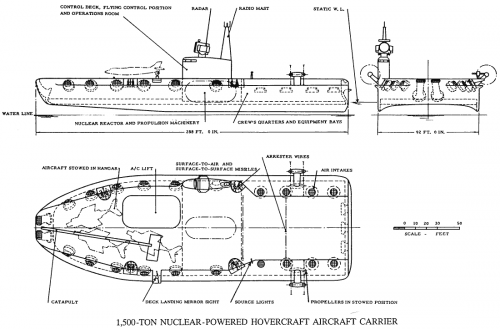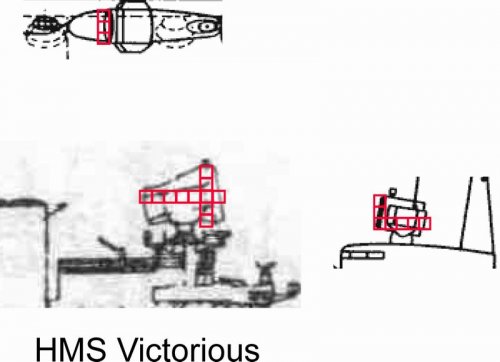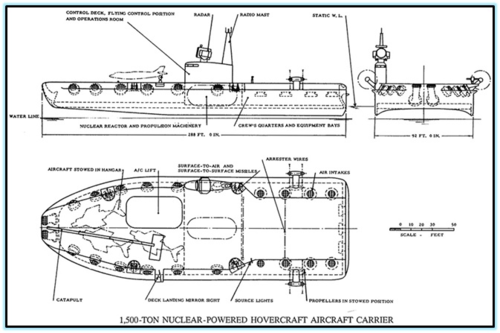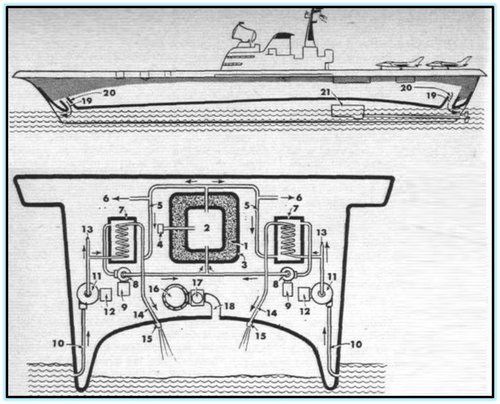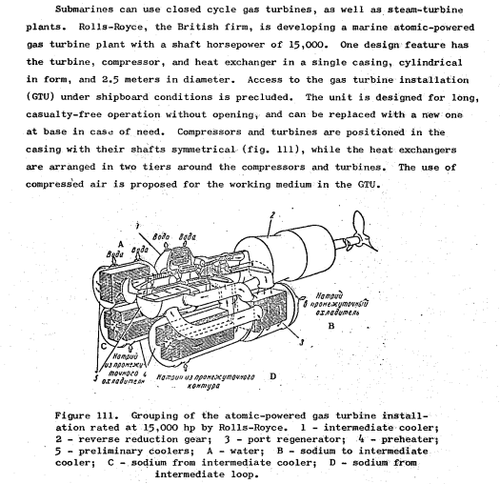- Joined
- 27 September 2006
- Messages
- 6,417
- Reaction score
- 6,818
On page 241 of "The Decline of British Seapower" by Desmond Wettern, the
then Minister of Aviation (Julian Amery) told a Business Dinner on 9 September 1964
that the Government were considering building an ocean-going "hovership" for the
RN. His Ministry and the MOD would make preliminary studies for a displacement vessel
capable of operating with the fleet using conventional propulsion or as a hovercraft.
The next day, Edward Wheeldon, Managing Director of Westland announced that a
1000 ton hovership was being examined, but in the interim a design for a 200- 400 ton
90 Knot frigate was being considered, which could be operational by 1970.
No further mention is made in DBS but in "Rebuilding the Royal Navy" D K Brown, a former
Naval constructor, explains what happened, or rather what did not happen, next. He recalls
that the study for a hovercraft with frigate capability would have cost 35 million Pounds.
Instead Brown gave the RN a sketch of a Whitby class based 50 Knot frigate. The RN realised it did not
want this ship and Brown comments "however, it did kill off the hoverfrigate". He adds that hovercraft
have their place for the "right roles".
Despite this official rejection Vosper Thorneycroft were still offering a 500 ton ocean going escort
hovership, pictured carrying a Lynx and with an RAF Nimrod overflying. Unfortunately I do not have
the 1970s brochure with this pic.
The US looked at a bigger version of the same concept with its SES programme, only to come to the
same conclusion, many dollars later, as DK Brown!
then Minister of Aviation (Julian Amery) told a Business Dinner on 9 September 1964
that the Government were considering building an ocean-going "hovership" for the
RN. His Ministry and the MOD would make preliminary studies for a displacement vessel
capable of operating with the fleet using conventional propulsion or as a hovercraft.
The next day, Edward Wheeldon, Managing Director of Westland announced that a
1000 ton hovership was being examined, but in the interim a design for a 200- 400 ton
90 Knot frigate was being considered, which could be operational by 1970.
No further mention is made in DBS but in "Rebuilding the Royal Navy" D K Brown, a former
Naval constructor, explains what happened, or rather what did not happen, next. He recalls
that the study for a hovercraft with frigate capability would have cost 35 million Pounds.
Instead Brown gave the RN a sketch of a Whitby class based 50 Knot frigate. The RN realised it did not
want this ship and Brown comments "however, it did kill off the hoverfrigate". He adds that hovercraft
have their place for the "right roles".
Despite this official rejection Vosper Thorneycroft were still offering a 500 ton ocean going escort
hovership, pictured carrying a Lynx and with an RAF Nimrod overflying. Unfortunately I do not have
the 1970s brochure with this pic.
The US looked at a bigger version of the same concept with its SES programme, only to come to the
same conclusion, many dollars later, as DK Brown!


